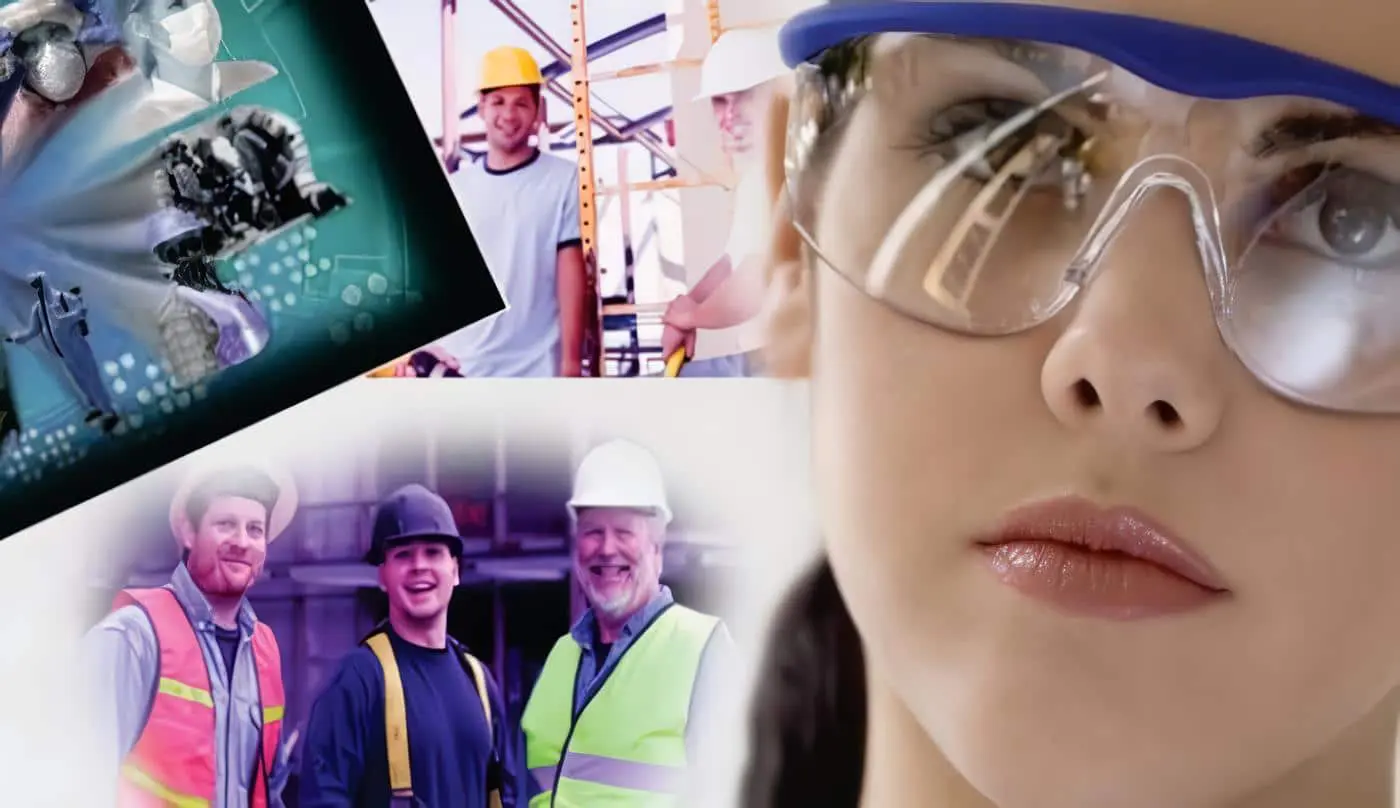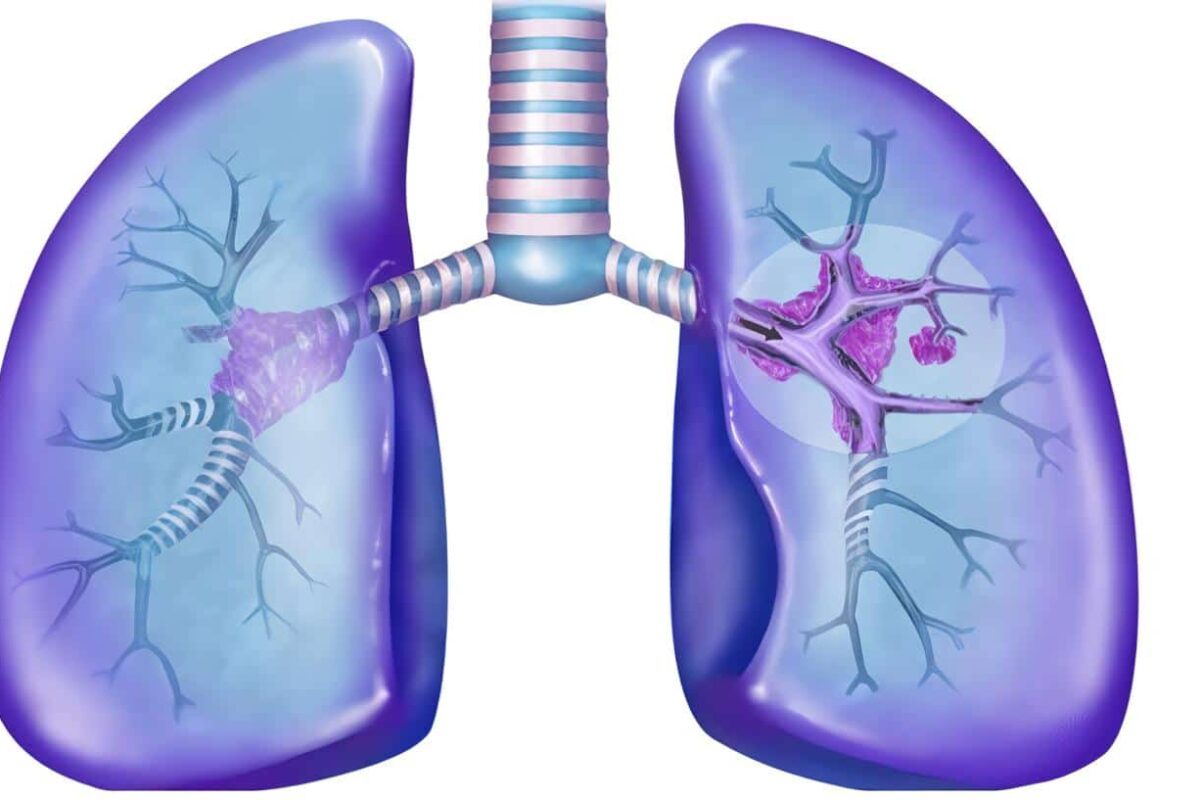1. ACGIH. 2007 TLVs and BEIs based on the documentation of the Threshold limit Values for Chemical substances and Physical agents and Biological Exposure indices. 2007.
2. ACGIH. TLVs and BEIs Threshold Limit Values, for chemical substances and Physical Agents. Biological Exposure Indices.2007.
3. ACGIH (Compiler) Guide to Occupational Exposure Values 2005.
4. ACGIH. Documentation of the Threshold Limit Values and Biological Exposure Indices, Vol III. 6th ed. Cincinnati, OH: American Conference of Governmental Industrial Hygienists, 1991.
5. ACGIH Industrial Ventilation 23 Edition. A Manual of Recommended Practice. Version electrónica.1998.
6. Albert A, Sammet J. Epidemiology of lung cancer. Chest. 2003 Jan;123(1 Suppl):21S-49S.
7. Alberg AJ, Ford JG, Samet JM. Epidemiology of Lung Cancer: ACCP Evidence-Based Clinical Practice Guidelines (2nd Edition). Chest, Chest 2007;132;29-55.
8. American Industrial Hygiene Association. A strategy for Assessing and Managing Occupational Exposures. Second Edition. Fairfax. VA 22031.USA.
9. American Industrial Hygiene Association. A Strategy for Assessing and Managing Occupational Exposures. Third Edition. Fairfax. VA 22031. USA.
10. Bach P, Jett JR. Computed Tomography Screening and Lung Cancer Outcomes. JAMA 7;2007 Vol. 297, No9;953-961.
11. Bache PB, Kelley MJ. Screening for lung cancer: a review of the current literature. Chest 2003;123 (suppl);72S-82S.
12. Bardin-Mikolajczak Alicja, Lissowska Jolanta, Zaridze David et al. Occupation and risk of lung cancer in Central and Eastern Europe: the IARC multi-center case–control study. Cancer Causes Control; 2007, 18:645–654.
13. Bechtel J, Kelley W. Lung Cancer Detection in Patients with Airflow Obstruction Identified in a Primary Care Outpatient Practice. Chest 2005;127;1140-1145.
14. Benzo R, Pulmonary Rehabilitation in Lung cancer. A Scientific Opportunity. Journal of Cardiopulmonary Rehabilitation and Prevention 2007; 27:61-64.
15. Beverly S. Cohen and Susanne V. Hering (Editors). Air Sampling Instruments. Chapter 2: Occupational Air Sampling Strategies by Rock James C., 8th Edition, ACGIH, USA. 1995.
16. Black W, Baron J. JAMA 297(9): 995-997, Mar 2007.
17. Brief R, Scala R. Occupational Exposure Limits for Novel Work Schedules: Am Ind. Hyg. Assoc. J. 1975; 36:467- 469.
18. Brodeur J, Vyskocil A, Tardif R, Perrault G, Drolet D, Truchon G, Lemay F. Adjustment of permissible exposure values to unusual work schedules. Am Ind. Hyg. Assoc. J. 2001; 62 (5):584-94.
19. Brouwer DH, Kroese R, Van Hemmen JJ. Transfer of Contaminants from Surface to Hands. Applied Occupational and Environmental Hygiene. Volume 14:231-239, 1999.
20. Brouwer DH, de Pater NA, Zomer C, Lurvink MW, van Hemmen JJ. An experimental study to investigate the feasibility to classify paints according to neurotoxicological risks: occupational air requirement (OAR) and indoor use of alkyd paints. Ann Occup Hyg. 2005 Jul; 49(5):443-51. Epub 2005 Mar 24.
21. Bullock W, Ignacio J. A strategy for assessing and managing occupational exposures. AIHA Third Edition. USA. 2006.
22. Carpagnano CE, Foschino Barbaro MP.3p microsatellite alteration in exhaled breath condensate from patients with Non small cell lung cancer. Am J Respir Crit Care Med 2005;172:738-744.
23. Celli B. Chronic respiratory failure after lung resection: the role of pulmonary rehabilitation. Thorac Surg Clin 14(2004) 417-428.
24. Cesario A, Ferri L. Post-operative respiratory rehabilitation after lung resection for non –small cell lung cancer. Lung Cancer (2207) 57,175-180.
25. Chorostowska-Wynimko J. The impact of genetic Markers on the Diagnosis of Lung Cancer: A current Perspective. Journal of Thoracic Oncology; 2:11,1044-1051.
26. Cohen B S; Hering S V (Eds) Air sampling instruments for evaluation of atmospheric contaminants. 8th Ed. Part I The measurement process Part II Instrumentation ACGIH USA 1995.
27. Colton CE. The occupational environment Its evaluation and control respiratory protection. AIHA USA 1998.
28. Corri B, Population screening for lung cancer using computed tomography, is there evidence of clinical effectiveness? A systematic review of the literature. Thorax 2007;62;131-138.
29. Corner J, Hopkinson J. Is late diagnosis of lung cancer inevitable? Interview study of patients, recollections of symptoms before diagnosis. Thorax 2005;60;314-319
30. De Vita V. Cancer Principles and Practice of Oncology. Lung Cancer 2005.
31. DFG Maximum Concentrations Values in the Workplace (MAKs). Maximum concentrations and biological tolerance values at the workplace, report No 40.
32. Dragnev Kh, Stover D, Dmitrovsky E. Lung Cancer Prevention: The Guidelines. Chest 2003, Jan;123(1 Suppl):60s-71s.
33. EHP. Environmental Health Perspectives Supplements Volume 105, number S1, February 1997.
34. Espinosa MT., Partanen T., Piñeros M., Chaves J., Posso H., Monge P., et al., Determining exposure history in occupational epidemiology. Rev. Panam Salud Pública 2005 Sep;18(3):187-196. ISSN 1020-4989.
35. Espinosa, M., Rojas, M., Bernal, M., Araque, A., Vélez, M., López, J.: Manual de agentes carcinógenos de los grupos 1 y 2A de la IARC, de interés ocupacional para Colombia. Instituto Nacional de Cancerología E.S.E., 07-2006. Bogotá D. C.
36. Fingerhut M, (WHO); Concha M, (ACHS, Chile); Purnett L, (University of Massachussetts at Lowell, USA); Steenland K, (NIOSH, USA); Driscoll T, (NOHSC), Australia WHO comparative risk analysis of the contribution of occupational risk factors to the global burden of disease. https://www.who.int/occupational_health/topics/en/oehtf15.pdf
37. Fong KM, Sekido Y. Lung cancer: Molecular biology of lung cancer: clinical implications. Thorax 2003;58:892-900.
38. Fumkin, H. Cancer Epidemiology and the workplace. Salud Pública Mex 1997;39:356-369.
39. Gestis-Analytical Methods for Chemical Agents at Workplaces. EU Project BC/CEN/ENTR/000/2002-16): https://www.hvbg.de/e/bia/gestis/analytical_methods/indexl.
40. GESTIS International Limit Values. BG-Institute for Occupational Safety and Health – BGIA.2007Versión electrónica: https://www.hvbg.de/e/bia/gestis/limit_values/indexl.
41. Gibbs A, Attanoos RL, Churg A et al. The “Helsinki Criteria” for Attribution of Lung Cancer to Asbestos Exposure How Robust Are the Criteria? Arch Pathol Lab Med; Vol 131, February 2007.
42. Gould M, Fletcher J. Evaluation of Patients with Pulmonary Nodules: When is it Lung Cancer? ACCP Evidence-Based Clinical Practice Guidelines. Chest 2007;132:108-130.
43. Gustavsson P, Nyberg F, Pershagen G, Scheele P, Jakobsson R, Plato N. Low-Dose Exposure to Asbestos and Lung Cancer: Dose-Response Relations and Interaction with Smoking in a Population-based Case-Referent Study in Stockholm, Sweden. Am J Epidemiol. 2002 Jun 1;155(11):1016-22.
44. Hamilton W, Peters TJ. What are the clinical features of lung cancer before the diagnosis is made? A population based case-control study. Thorax 2005; 60;1059-1065.
45. Henschke CI, Yankelevitz DF. Survival of patients with stage I lung cancer detected on CT screening. The International Early Lung Cancer Action Program Investigators. NEJM 2006;355:1763-1771.
46. Hirsch Fred, Franklin W. Early detection of lung cancer: Clinical Perspectives of Recent Advances in Biology and radiology. Clinical cancer Research 2001 ;7:5-22
47. Hickey JLS, Reist PC. Application of Occupational Exposure Limits to Unusual Work Schedules. Am Ind. Hyg. Assoc. J. 1997; 38:613- 621.
48. Hill R.H Jr., Gauce JA, Whitehead P. Chemical Safety Level (CSLs): A proposal for chemical safety practices in microbiological and biomedical laboratories. Office of health and safety, Centers for Disease Control and Prevention.https://www.cdc.gov/od/ohs/CSL%20article.
49. IARC. International Agency for Research on Cancer. Monographs on the evaluation of Carcinogenic Risks to Humans. Volumen 29 Some Industrial Chemicals and Dyestuffs 1982.
50. IARC en https://www.iarc.fr.
51. INSHT. Instituto Nacional de Seguridad e higiene en el trabajo de España. Fichas y notas prácticas. Facts 35: La comunicación de la información relativa a la sustancias peligrosas. ISSN 1681-2085. Bélgica. 2003 https://www.mtas.es/insht/information/fichasprac#np_efp_hig.
52. INSHT Instituto Nacional de Seguridad e Higiene en el Trabajo. Límites de exposición profesional para agentes químicos. Ministerio de trabajo y asuntos sociales. España 2007. Versión electrónica. https://www.mtas.es/insht/practice/vlas.
53. INSHT Instituto Nacional de Seguridad e Higiene en el Trabajo. Ministerio de trabajo y asuntos sociales. Métodos de mediciones para agentes químicos. Apéndice 5. Guía técnica para la evaluación y prevención de los riesgos presentes en los lugares de trabajo relacionados con agentes químicos. España. 2003. Versión electrónica:www.mtas.es/insht/practice/g_AQ .
54. INSHT NTP 748: Guantes de protección contra productos químicos. Instituto Nacional de Seguridad e Higiene en el Trabajo. Ministerio de trabajo y asuntos sociales. España. 2003. Versión electrónica: www.mtas.es/insht/ntp/ntp_748
55. International labor office (ILO). International Chemical Control Tool Kit. Ginebra. Suiza, 2004. Versión electrónica: https://www.ilo.org/public/english/protection/safework/ctrl_banding/toolkit/main_guide.pdf .
56. ILO. International chemical control toolkit. Draft guidelines. International Labour Office Switzerland 2004.
57. Jamsheder Rahman SM, Shyr Y. Proteomic patterns of preinvasive bronchial lesions. Am J Respir Crit care Med 2005;172:1556-1562.
58. Jassem J. The role of radiotherapy in ling cancer: Where is the evidence? Radiotherapy and Oncology 2007;83:203-213.
59. Jatoi A, Aranguren D. A Critical Look at the Role of Chemoterapy in Older Patients with Non-small Cell Lung Cancer. Journal of Thoracic Oncology 2007;2:83-90
60. Jett J. Treatment of non-small cell lung cancer stage IIIB: ACCP guidelines, 2007;132:266-276.
61. Jett JR, Midthun DE. Screening for lung cancer; current status and future directions; Chest 2994;125 (suppl), 158S-162S.
62. Judson Wells. Lung Cancer From Passive Smoking at Work. Am J Public Health. 1998;88:1025- 1029.
63. Laurence M, Fabrice C. Detection of Lung Cancer on Radiographs: Receiver Operating Characteristics Analyses of Radiologists, Pulmonologists Performance.
64. Ley 55 de 1993. Convenio sobre la seguridad en la utilización de los productos químicos en el trabajo. Diario oficial año CXXIX. N.40936.6 Julio. Santafé de Bogotá D.C.1993.
65. Lowry L. Biological limits values. In: Methods for Biological Monitoring (Kneip T, Crable J, eds). Washington: American Public Health Association, 1988;109-119.
66. Macbeth F, Abratt R. Lung cancer management in limited resource settings: Guidelines for appropiate good care. Radiotherapy and Oncology 2007;82: 123-131
67. Machado RF, Detection of lung cancer by sensor array analyses of exhaled breath. Am J Respir Crit Care Med 2005;171:1286-1291.
68. Madahenia PJ. Fleisher. Lung cancer screening with helicoidal computed tomography in older adult smokers: a decision and cost-effectiveness analysis. JAMA 2003;289: 313-322.
69. McWilliams A, Mayo J. Lung cancer screening: a different paradigm. Am J Respir Cirt Care Med 2003;168:1167-1173.
70. Malchaire J. Método SOBANE: Productos químicos peligrosos. Unidad de higiene y fisiología del trabajo. Facultad de medicina. Universidad Católica de Lovaina. Bélgica Mayo 2005. Versión electrónica: https://www.sobane.be/langues/sp/Malchaire%20texte%20SOBANE%20quimicos%202005%20Sp.pdf.
71. Malchaire J. Evaluación, prevención y mejoras de los riesgos derivados del trabajo con productos químicos peligrosos. Informe del estudio de observación SOBANE nivel 2. Unidad de higiene y fisiología del trabajo. Facultad de medicina Universidad Católica de Lovaina. Bélgica. Mayo 2005. Versión electrónica.https://www.sobane.be/langues/sp/ejamplo_Sobane_quimicos_rapport_sp.pdf.
72. Manser RL, Irving LB. Screening for lung cancer: a systematic review and meta-analysis of controlled trials. Thorax 2003; 58:784-789.
73. Ministerio de la Protección Social. Guía de Atención Integral Basada en la Evidencia para Neumoconiosis (Silicosis, Neumoconiosis del minero de carbón y Asbestosis). Bogotá. Colombia. 2006.
74. Ministerio de la Protección Social. Manual Guía sobre Procedimientos para la Rehabilitación y Reincorporación Ocupacional de los Trabajadores en Sistema General de Riesgos Profesionales. Bogotá- Colombia: La Entidad, 2004.
75. Myrdal G. Quality of live following lung cancer surgery. Thorax 2003;58:194-197
76. Myrdal G, Lambe M. Effect of delays on prognosis in patients with non-small cell lung cancer. Thorax 2004;59;45-49.
77. Nakamura H, Kawasaki N. Role of preoperative chemotherapy for non-small cell lung cancer: A meta-analysis. Lung cancer 2006; 54:325-329.
78. Nazarian J. Cardiopulmonary Rehabilitation After Treatment For Lung Cancer. Curr Treat Options Oncol 2004; 5: 75-82 Nazarian J.
79. NIOSH. Manual of Analytical Methods (NMAM), Fourth Edition. Versión electrónica: https://www.cdc.gov/niosh/nmam/pdfs.
80. NIOSH Recommended Exposure Limits (RELs) – Compendium of policy documents and statements.
81. NIOSH National Institute for Occupational Safety and Health. Pocket Guide to Chemical Hazards. 2005. Versión electrónica https://www.cdc.gov/niosh/npg/defaultl. NIOSH Respirator Selection Logic 2004. Versión electrónica: https://www.cdc.gov/niosh/docs/2005-100/chapter2l#chapt2a.
82. NIOSH Guide for evaluating the performance of chemical protective clothing (CDC). USA 1990.
83. NIOSH Respirator selection logic 2004. Versión electrónica: https://www.cdc.gov/niosh/docs/2005-100/chapter2l#chapt2a. rk Shifts. In Patty’s Industrial Hygiene and Toxicology, Vol. III, Eds.
84. OIT: Enciclopedia de salud y seguridad en el trabajo, 1998. Madrid.
85. OIT Convenio 139. Convenio sobre la prevención y control de los riesgos profesionales causados por las sustancias o agentes cancerígenos. Ginebra1976.
86. Okawara G, Mackay J. Management of Unresected Stage III Non-small Cell Lung Cancer: A Systematic Review. Journal of Thoracic Oncology. Vol. 1; 377-393.
87. O’reilly KMA., Mclaughlin AM, Beckett WS, Sime PJ. Asbestos-Related Lung Disease. American Family Physician Volume 75, Number 5 March 1, 2007.
88. OSHA Permissible Limits (PELs). Code of federal regulations, part 1910.1000-1910.1200, air contaminants, final rule specified in tables Z-1, Z-2, and Z-3.
89. Paustenbach DJ. Occupational Exposure Limits, Pharmacokinetics and Unusual Work Shifts. In Patty’s Industrial Hygiene and Toxicology, Vol. III, Eds.
90. Patty’s Industrial Hygiene and Toxicology, Vol III, Eds Cralley &. Cralley, New York, John Wiley & Sons, 11-277, 1985.
91. Pérez De Las Casas, M. y Fernández Infante, B. Carcinoma de pulmón de origen laboral. Anales Sis San Navarra, 2005, vol.28 supl.1, p.101-106. ISSN 1137-6627.
92. Perkins JL. Modern Industrial Hygiene. V 1, ITP Editors. New Cork. USA. 1996.
93. Perkins J., Ming-Jia You. Predicting temperature effects on Chemical Protective Clothing Permeation AIHA Journal 53(2):77-83 (1992).
94. Phillips M, Cataneo RN. Detection of lung cancer with volatile markers in the breath. Chest 2003; 123:2115-2123.
95. Popendorf W. Industrial Hygiene Control of Airborne Chemical Hazards. Taylor & Francis. Boca Raton, FL 33487-2742 USA. 2006.
96. Quillen DM. Asbestos Exposure Screening. Medscape Family Medicine/Primary Care. 2004;6(2).
97. Ramírez D, Buitrago B. Cáncer broncogénico. Fundamentos de Medicina-Neumología 2007; 608-629.
98. Robinson L. Treatment of non-small cell lung cancer stage IIIA: ACCP evidence based clinical practice guidelines, 2007; 132:243-265.
99. Rock, J. Occupational Air Sampling Strategies Occupational Health and Safety Institute, Texas and M University, College Station, Texas. 8 ed. 1995 ACGIH pp 19-39.
100. Rock JC. Air Sampling Instruments. Chapter 2: In Cohen BS, Hering SV, Editors. Occupational Air Sampling Strategies. 8th Ed., Cincinnati, Ohio. E.E.U.U: ACGIH. 1995.
101. Rosell R, Cuello M. Treatment of non-small cell lung cancer and pharmacogenomics: where are and where we are going. Current Opinion in oncology 2006; 18: 135-143.
102. Quillen DM. Asbestos Exposure Screening. Medscape Family Medicine/Primary Care. 2004;6(2).
103. Sadri Mahjub H. Meta-analysis of case-referent studies of specific environmental or occupational pollutants on lung cancer. Indian Journal of Cancer, October – December 2006; 43:4.
104. Salud laboral, conceptos y técnicas para la prevención de riesgos laborales 3 edición 2006, editorial elsevier masson, España).
105. Scheuplein WJ, Blank H. Permeability of the skin. Phisyol. Rev. 51(4):702-747 (1971).
106. Scott W. Treatment of non-small cell lung cancer stage I and stage II: ACCP Evidence Based Clinical Practice Guidelines (2nd edition), 2007;132:234-242
107. Sinclair GC, Westerb RC, Maibachb HI. Partition Coefficients for Benzene in Human Skin AIHA Journal 63:685–688 (2002). 108. Simon G. Treatment of small cell lung cancer. ACCP guidelines 2007; 132 323-339.
109. Socinski M. treatment of non-small cell lung cancer stage IV: ACCP guidelines 2007; 132: 277-289.
110. Spear J.E. Exposure Assessments and Industrial Hygiene Exposure Assessments. Worst-Case versus Random Sampling J.E. Spear Consulting, LLC. USA. 2004.
111. Spira A. Multidisciplinary Management of Lung Cancer. NEJM 2004;350:379-92.
112. Spiro s, James L E. Early Compared with late radiotherapy in combined modality treatment for limited disease small-cell lung cancer: A London lung cancer group multicenter randomized clinical trial and meta- analysis. J Clin Oncol 2006;24:3823-3830.
113. Stewart L A. Chemotherapy in non small cell lung cancer: a meta-analysis using updated data on individual patients from 52 randomized clinical trials. BMJ 1995;311:899-909.
114. Strand T-E, Rostad H. Survival after resection for primary lung cancer: a population based study of 3211 resected patients. Thorax 2006;61:710-715.
115. Takaoka S. The value of Preoperative Pulmonary Rehabilitation. Thorac Surg Clin 15; 2005: 203-211.
116. Talty JT (Ed) Industrial Hygiene Engineering Second Edition NIOSH USA1986.
117. U.S. Occupational Safety & Health Administration (OSHA) Sampling and Analytical Methods https://www.osha.gov/dts/sltc/methods/indexl .
118. USPSTF. Lung Cancer Screening: Recommendation Statement. Ann Intern Med. 2004;140:738-739.
119. Vahdat N, Reginald D. Decontamination of Chemical Protective Clothing’, American Industrial Hygiene Association Journal 50:3, 152 – 156(1989).
120. Wells J. Lung Cancer From Passive Smoking at Work. Am J Public Health. 1998;88:1025- 1029.
121. Wilson L. Superior vena cava syndrome with malignant causes; NEJM 2007;356;1862-69.
122. WHO/IPCS/ILO. Fichas internacionales de seguridad química Versión electrónica: https://www.mtas.es/insht/ipcsnspn/spanish.
123. Wright G, Manser R L, Byrnes G, Hart D, Campbell D A. Surgery for non-small cell lung cancer: a systematic review and meta-analysis of randomized controlled trials. Thorax 2006; 61:597-603.
Bibliografía para Cáncer de Pulmón Relacionado con el Trabajo

Publicidad






